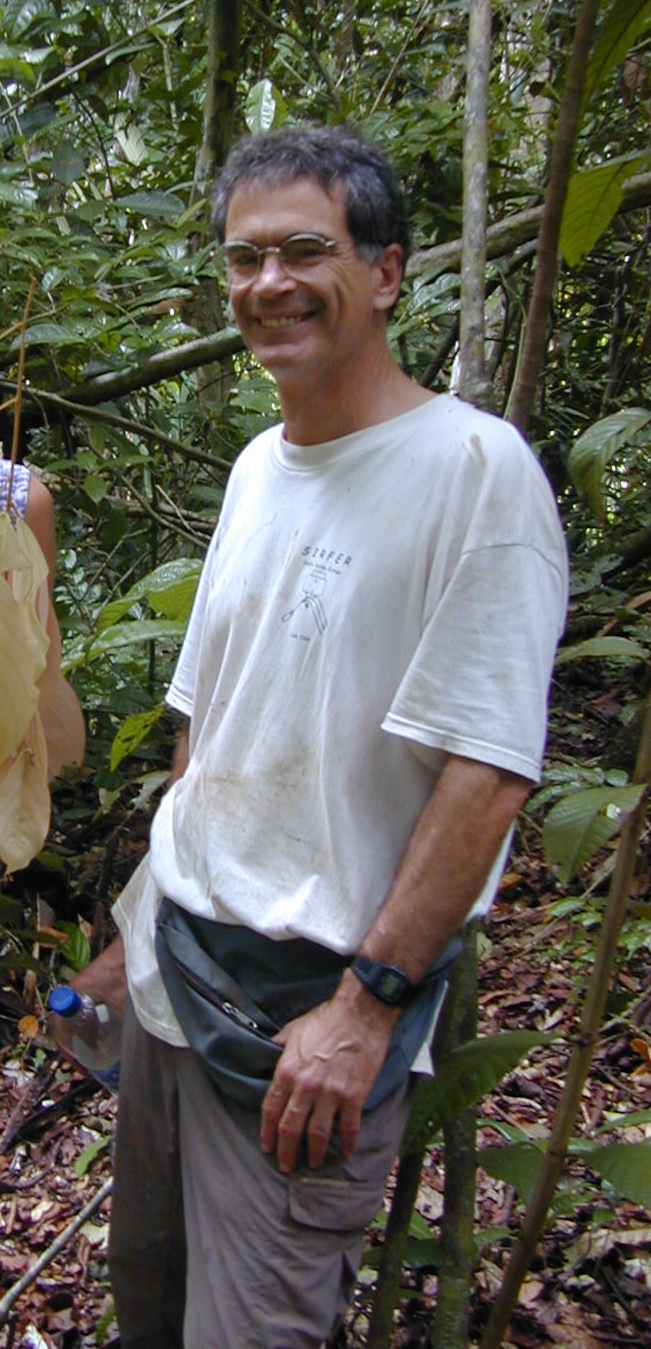
May 2, 2007 – The Thursday, May 3, 2007 issue of the journal Nature contains a study co-authored by Tom Kursar, a University of Utah biologist also affiliated with the Smithsonian Tropical Research Institute in Panama.
Kursar and the other researchers — including former University of Utah postdoctoral fellow Bettina Engelbrecht — found that even in tropical rainforests, which are normally thought of as wet, where trees and shrubs grow depends on how resistant they are to drought during dry seasons.
The finding is important because global warming is expected to change rainfall in the tropics, making some areas drier and other wetter. In tropical rainforests where global warming lengthens the dry season and where forest lands already are fragmented by development, the findings suggest that global warming could result in “loss of diversity and perhaps species extinction,” Kursar says.
And even in rainforests where dry seasons are shortened by global warming, “if you want to predict the change [in plant distributions], we’re saying looking at rainfall is going to be the most important factor,” he adds.
Below is a news release on the study, issued by the Smithsonian Tropical Research Institute.
Media only: Beth King (703) 787-3770, ext. 8216, kingb@si.edu
Web site: www.stri.org
Drought Limits Tropical Plant Distributions, Scientists at the Smithsonian Report
Drought tolerance is a critical determinant of tropical plant distributions, researchers working at the Smithsonian Tropical Research Institute (STRI) in Panama report in the journal Nature, May 3. In a novel coupling of experimental measurements and observed plant distributions across a tropical landscape, drought tolerance predicted plant distributions at both local and regional scales. This mechanism to explain a common observation will contribute significantly to models of land use and climate change.
Tropical forest, often called rainforest, conjures up images of verdant, evergreen landscapes. Whereas temperatures may be relatively constant in the tropics, rainfall and water availability often vary dramatically across small distances.
“The Isthmus of Panama is the ideal place to test the idea that the distribution of plant species is influenced by their ability to tolerate a lack of water,” said researcher and article author Bettina Engelbrecht of the University of Kaiserlauten in Germany and STRI.
After measuring the drought tolerance of 48 plant species experimentally, scientists looked at the plants’ regional distributions across 122 tropical forest plots set up by the Center for Tropical Forest Science. The plots are distributed over a rainfall gradient from the wet Caribbean slope to the drier Pacific slope.
“It was a surprise that even in humid tropical forests, traditionally viewed as water saturated, plants growing at dry sites were more drought-tolerant than plants growing at wet sites,” Engelbrecht said.
The team also evaluated the local distributions of both seedlings and older trees on STRI’s 50-hectare Forest Dynamics plot on Barro Colorado Island, roughly in the middle of the rainfall gradient. Drought tolerance was a stronger predictor of species distributions for saplings and adult trees than for seedlings, implying that plant community composition adjusts in accordance to environmental constraints.
Researchers ruled out several other potential predictors of plant distribution that could be associated with drought tolerance, such as shade tolerance and nutrient availability.
Identifying drought tolerance as a cause of plant distribution patterns significantly advances the understanding of tropical plant diversity and implies that changes in rainfall patterns — a predicted consequence of climate change in the tropics — may give rise to dramatic changes in tropical plant communities.
“In the tropics, climate change does not just mean temperature change — dramatic shifts in rainfall patterns also are expected to occur,” said Ben Turner, STRI staff scientist and co-author. “Our research shows that changes in rainfall patterns will have considerable consequences for tropical forests.”
The Smithsonian Tropical Research Institute, headquartered in Panama City, Panama, is a unit of the Smithsonian Institution. The Institute furthers the understanding of tropical nature and its importance to human welfare, trains students to conduct research in the tropics and promotes conservation by increasing public awareness of the beauty and importance of tropical ecosystems.
Ref. Bettina M. J. Engelbrecht, Liza S. Comita, Richard Condit, Thomas A. Kursar, Melvin T. Tyree, Benjamin L. Turner, Stephen P. Hubbell. Drought sensitivity shapes species distribution patterns in tropical forests. Nature. May 3, 2007.
